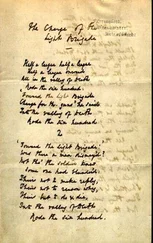Alfred Ellis - The History of the First West India Regiment
Здесь есть возможность читать онлайн «Alfred Ellis - The History of the First West India Regiment» — ознакомительный отрывок электронной книги совершенно бесплатно, а после прочтения отрывка купить полную версию. В некоторых случаях можно слушать аудио, скачать через торрент в формате fb2 и присутствует краткое содержание. Жанр: foreign_antique, foreign_prose, на английском языке. Описание произведения, (предисловие) а так же отзывы посетителей доступны на портале библиотеки ЛибКат.
- Название:The History of the First West India Regiment
- Автор:
- Жанр:
- Год:неизвестен
- ISBN:нет данных
- Рейтинг книги:3 / 5. Голосов: 1
-
Избранное:Добавить в избранное
- Отзывы:
-
Ваша оценка:
- 60
- 1
- 2
- 3
- 4
- 5
The History of the First West India Regiment: краткое содержание, описание и аннотация
Предлагаем к чтению аннотацию, описание, краткое содержание или предисловие (зависит от того, что написал сам автор книги «The History of the First West India Regiment»). Если вы не нашли необходимую информацию о книге — напишите в комментариях, мы постараемся отыскать её.
The History of the First West India Regiment — читать онлайн ознакомительный отрывок
Ниже представлен текст книги, разбитый по страницам. Система сохранения места последней прочитанной страницы, позволяет с удобством читать онлайн бесплатно книгу «The History of the First West India Regiment», без необходимости каждый раз заново искать на чём Вы остановились. Поставьте закладку, и сможете в любой момент перейти на страницу, на которой закончили чтение.
Интервал:
Закладка:
In these islands the army awaited supplies from New York, of which it was much in need; and, on the arrival of two frigates, it commenced to move to the island of Port Royal, which at the same time would afford good quarters for the troops during the intense heats, and, from its vicinity to Savannah, and its excellent harbour, was the best position that could be chosen for covering Georgia.
Directly General Lincoln discovered what was taking place, he advanced to attack. St. John's Island is separated from the mainland by a narrow inlet, called Stono River, and communication between the mainland and the island was kept up by a ferry. On the mainland, at this ferry, General Prevost had established a post, consisting of three redoubts, joined by lines of communication; and, to cover the movement of the army to Port Royal Island, he here posted Lieutenant-Colonel Maitland with the 1st Battalion of the 71st Regiment, a weak battalion of Hessians, the North Carolina Regiment, and the South Carolina Regiment, amounting in the whole to about 800 men.
On the 20th of June, General Lincoln made a determined attempt to force the passage, attacking with a force variously estimated at from 1200 to 5000 men and eight guns. Lieutenant-Colonel Maitland's advanced posts, consisting of the South Carolina Regiment, were some distance in front of his works; and a smart firing between them and the Americans gave him the first warning of the approach of the enemy. He instantly sent out two companies of the 71st from his right to ascertain the force of the assailants. The Highlanders had proceeded only a quarter of a mile when they met the outposts retiring before the enemy. A fierce conflict ensued. Instead of retreating before superior numbers, the Highlanders persisted in the unequal combat till all their officers were either killed or wounded, of the two companies eleven men only returned to the garrison; and the British force was sadly diminished, and its safety consequently imperilled by this mistaken valour.
The whole American line now advanced to within three hundred yards of the works, and a general engagement began, which was maintained with much courage and steadiness on both sides. At length the regiment of Hessians on the British left gave way, and the Americans, in spite of the obstinate resistance of the two Carolina regiments, were on the point of entering the works, when a judicious flank movement of the remainder of the 71st checked the advance; and General Lincoln, apprehensive of the arrival of British reinforcements from the island, drew off his men, and retired in good order, taking his wounded with him.
The battle lasted upwards of an hour. The British had 3 officers and 19 rank and file killed, and 4 officers and 85 rank and file wounded. The South Carolina Regiment had Major William Campbell and 1 sergeant killed, 1 captain, 1 sergeant, and 3 rank and file wounded. 5 5 "Return of the killed, wounded, and missing at the repulse of the Rebels at Stono Ferry, South Carolina, June 20th, 1779."
The Americans lost 5 officers and 35 men killed, 19 officers and 120 men wounded.
Three days after the battle, the British troops evacuated the post at Stono Ferry, and also the island of St. John, passing along the coast from island to island till they reached Beaufort in the island of Port Royal. Here General Prevost left a garrison under the command of Lieutenant-Colonel Maitland, and proceeded with the remainder of his force, with which was the South Carolina Regiment, to the town of Savannah.
The heat had now become too intense for active service; and the care of the officers was employed in preserving their men from the fevers of the season, and keeping them in a condition for service next campaign, which was expected to open in October.
CHAPTER II.
THE SIEGE OF SAVANNAH, 1779 – THE SIEGE OF CHARLESTOWN, 1780 – THE BATTLE OF HOBKERK'S HILL, 1781
At the opening of the next campaign, although General Prevost had been obliged to retire from Charlestown and to abandon the upper parts of Georgia, yet, so long as he kept possession of the town of Savannah and maintained a post at Port Royal Island, South Carolina was exposed to incursions. The Americans, therefore, pressed the French admiral, Count D'Estaing, to repair to the Savannah River, hoping, by his aid, to drive the British from Georgia. D'Estaing, in compliance, sailed from Cape François, in St. Domingo; and with twenty-two sail of the line and a number of smaller vessels, having 4800 French regular troops on board and several hundred black troops from the West Indies, appeared off the Savannah so unexpectedly that the Experiment , a British fifty-gun ship, fell into his hands. On the appearance of the French fleet, on September 9th, General Prevost immediately called in all his outposts in Georgia, sent orders to Lieutenant-Colonel Maitland, at Port Royal, to rejoin him at once, and exerted himself to strengthen the defences of the town of Savannah.
For the first three or four days after the arrival of the fleet, the French were employed in moving their troops through the Ossabaw Inlet to Beaulieu, about thirteen miles above the town of Savannah. On the 15th of September, the French, with a party of American light horse, attacked the British outposts, and General Prevost withdrew all his force into his works.
On the 16th, D'Estaing summoned the place to surrender. Lieutenant-Colonel Maitland's force had not yet arrived, the works were still incomplete, and General Prevost was desirous of gaining time; he consequently requested a suspension of hostilities for twenty-four hours. This was granted, and in that critical interval Lieutenant-Colonel Maitland, by the most extraordinary efforts – for one of General Prevost's messengers had fallen into the hands of the enemy, who had at once seized all the principal lines of communication – arrived with the garrison of Port Royal, and entered the town. Encouraged by this accession of strength, General Prevost now informed Count D'Estaing that he was resolved to defend the place to the last extremity. On the 17th, D'Estaing had been joined by General Lincoln with some 3000 men, which, with the French troops, raised the total besieging force to something over 8000. The besieged did not exceed 3000.
The enemy spent several days in bringing up guns and stores from the fleet, and on the 23rd the besieging army broke ground before the town. On the 1st of October, they had advanced to within 300 yards of the British works. On the morning of the 4th of October, several batteries, mounting thirty-three pieces of heavy cannon and nine mortars, with a floating battery of sixteen guns on the river, opened fire on the town. For several days they played incessantly on the garrison, and there was continued skirmishing between the negroes of the Carolina regiments and the enemy. 6 6 "The True History of the Siege of Savannah," published 1780.
On the morning of the 9th of October, the enemy, under a furious cannonade, advanced to storm in three columns, with a force of 3000 French under D'Estaing in person, and 1500 Americans under Lincoln. General Prevost, in his despatch to Lord George Germain, dated Savannah, November 1st, 1779, says: "However, the principal attack, composed of the flower of the French and rebel armies, and led by D'Estaing in person, with all the principal officers of either, was made upon our right. Under cover of the hollow, they advanced in three columns; but having taken a wider circuit than they needed, and gone deeper in the bog, they neither came so early as they intended nor, I believe, in the same order. The attack, however, was very spirited, and for some time obstinately persevered in, particularly on the Ebenezer Road Redoubt. Two stand of colours were actually planted, and several of the assailants killed upon the parapet; but they met with so determined a resistance, and the fire of three seamen batteries, taking them in almost every direction, was so severe, that they were thrown into some disorder, at least at a stand; and at this most critical moment, Major Glasier, of the 60th, with the 60th Grenadiers and the Marines, advancing rapidly from the lines, charged (it may be said) with a degree of fury; in an instant the ditches of the redoubt and a battery to its right in rear were cleared… Lieutenant-Colonel de Porbeck, of Weissenbach's, being field officer of the day of the right wing, and, being in the redoubt when the attack began, had an opportunity, which he well improved, to signalise himself in a most gallant manner; and it is but justice to mention to your lordships the troops who defended it. They were part of the South Carolina Royalists, the Light Dragoons (dismounted), and the battalion men of the 4th 60th, in all about 100 men, commanded (by a special order) by Captain James, of the Dragoons (Lieutenant 71st), a good and gallant officer, and who nobly fell with his sword in the body of the third he had killed with his own hand."
Читать дальшеИнтервал:
Закладка:
Похожие книги на «The History of the First West India Regiment»
Представляем Вашему вниманию похожие книги на «The History of the First West India Regiment» списком для выбора. Мы отобрали схожую по названию и смыслу литературу в надежде предоставить читателям больше вариантов отыскать новые, интересные, ещё непрочитанные произведения.
Обсуждение, отзывы о книге «The History of the First West India Regiment» и просто собственные мнения читателей. Оставьте ваши комментарии, напишите, что Вы думаете о произведении, его смысле или главных героях. Укажите что конкретно понравилось, а что нет, и почему Вы так считаете.












